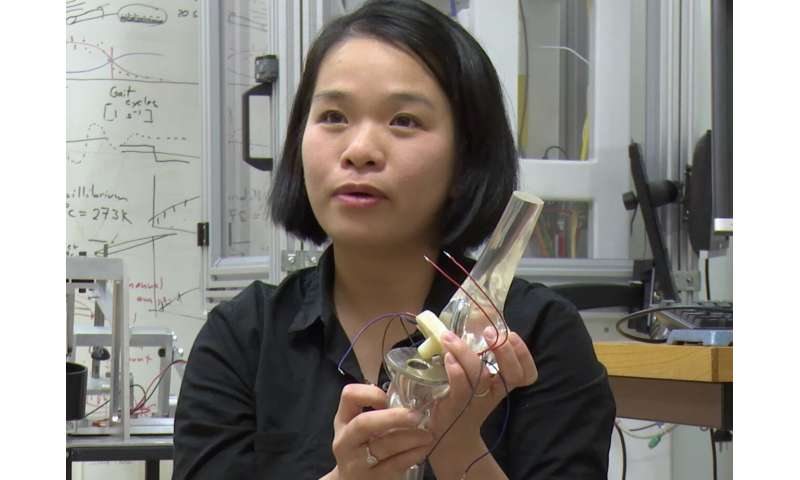
Sensors that have the potential to make aircraft safer could also be used to improve the lives of diabetics and those who rely on prosthetics.
UNSW Canberra Ph.D. students and researchers across fields as diverse as aeronautics, biomedicine and physics are working together, in collaboration with researchers at Canberra Hospital, to create sensors that could be used in knee replacements, therapeutic insoles, airplanes and vehicles.
Dr. Quyen Do has just completed her Ph.D. studies at UNSW Canberra, where she began developing microscopic sensors that can be used to detect wear and tear in knee replacements.
“The sensor can be incorporated into the knee bearing,” Dr. Do said.
“When the load is applied, we can see the measurement from the sensor. If the patient experiences any extreme loading, the doctor can give feedback to the patient to correct things like that.”
Made from carbon nanotubes and polyethylene, these sensors are piezoresistive. This means they can detect a change in electrical resistance when mechanical strain is applied.
The technology is still being developed, and first year Ph.D. student Ruth Poblete is applying the sensors to the insoles of shoes for diabetic patients. She is part of a cross institutional team lead by Associate Professors Sean O’Byrne and Heiko Timmers that includes also biomechanics and sports medicine researchers at the University of Canberra and UAS Muenster in Germany.
One of the complications of diabetes includes nerve damage, otherwise known as diabetic neuropathy, causing a loss feeling in the feet. Left untreated, this can lead to serious injuries and even amputation.
“There are therapeutic shoes that are available in the market to distribute pressure across the feet, but just like any others, they wear out and eventually lose their functionality,” Ms Poblete said.
“This is where I will come in. I would like to develop an insole that would detect pressure and at the same time distribute it across feet.”
UNSW Canberra Aeronautical Engineering Associate Professor Sean O’Byrne, a supervisor overseeing both of these projects, has researched how this technology could be used to detect faults in aircraft.
The collaboration between aeronautics and medicine was sparked when an orthopedic surgeon asked Professor O’Byrne whether emerging aerospace technologies could be applied to prosthetics.
“It was that discussion that led to the idea of making these plastics that sense themselves—a type of smart material,” Professor O’Byrne said.
He said the research is a great example of people with different skill sets working together to solve problems in a variety of different fields.
“Not only is it a collaboration between our research group and the Trauma and Orthopaedics Research Unit at Canberra hospital, but it’s also a collaboration between aeronautical engineers like myself and physicists, like my colleague Heiko Timmers,” Associate Professor O’Byrne said.
It’s a technology that could be applied to anything that requires a regular service, and Associate Professor O’Byrne said it’s an area that has huge potential for Ph.D. students to help develop.
“This is just one example of some tremendous technologies that come out of universities in Australia, out of ideas of people getting together and wondering how they can make the world a better place,” Associate Professor O’Byrne said.
Source: Read Full Article
